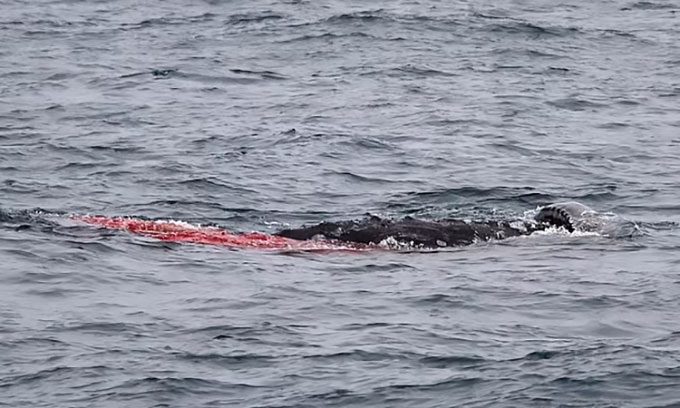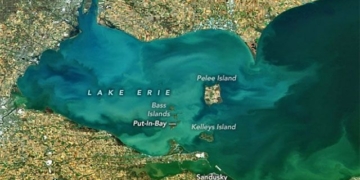California’s boaters were fortunate to witness a “once-in-a-lifetime” experience as they saw a gray whale giving birth up close.
A mother gray whale and her calf swim around boats filled with people. (Video: Dolphin Safari)
The Pacific gray whale is no stranger to those who use Capt. Dave’s Dolphin & Whale Watching Safari services in Dana Point, California, USA. The organization estimates they see around 1,000 of these whales each year during their migration, which typically lasts from December to May.
However, the sight of a mother gray whale over 10 meters long giving birth and showcasing her newborn to three boats filled with people on January 2 was described as “unprecedented” in the organization’s 25-year history.
“We were right there when it happened,” emphasized Dave Anderson, owner of Capt. Dave’s Dolphin & Whale Watching Safari. “This is an experience unlike any other for everyone present.”
Gary Brighouse, the captain of one of the three boats, added that they spotted the mother whale before noticing “blood coloring the water,” which experts say “is usually not a good sign” as it could indicate a predator attack. However, when the calf emerged, “the emotions shifted from horror to awe and pure joy.”
“The mother whale even carried the calf on her back and swam toward our boat as if to greet us and show off her newborn,” Brighouse shared.

Observers initially thought the gray whale was being attacked by a predator when they saw the water turn red from blood. (Photo: AP).
Those present almost immediately witnessed the bonding between the mother and calf as the newborn began to use its swimming skills to gently glide around its mother.
Although this was a unique experience, experts say it’s not unusual for gray whales to give birth during their migration from Alaska to Mexico. Typically, marine mammals prefer to give birth in the warm, protected lagoons of Baja California, Mexico, where they can find safety from orcas and other predators. Warmer waters are also beneficial for the newborn whales, which have not yet developed thick layers of blubber for protection.
“There are times when the calves can’t wait and are born during the migration,” the tour group explained, referring to it as an unforgettable encounter.


















































